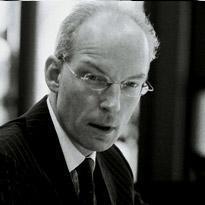Finance director Martin Bride reflects on strategy as analysts deem investment result disappointing
Lloyd’s insurer Beazley’s cautious approach was a double-edged sword in the first half of 2010. The firm’s conservative reserving strategy helped to cushion it against losses from the Chilean earthquake, but the returns from its low-risk investment portfolio disappointed analysts.
Beazley, the first of the listed Lloyd’s insurers to report, had a good first half by many measures. Profit before tax increased nearly fourfold to $115.5m (£74.7m), compared with $30.1m in the same period of 2009. This figure included a one-off foreign exchange gain of $33.7m related to Beazley boosting the US dollar portion of its capital base to match its written premiums and converting financial reporting to dollars.
But even excluding the exceptional gain, the pre-tax profit is a 172% increase over 2009. After-tax profit for the half was up 213% to $97.9m from $31.2m.
Beazley’s combined ratio for the first half of 2010 was 89%, slightly improved from 90% in the first half of 2009. The results were also boosted by $65.9m of reserve releases from prior years. The company’s policy of not releasing catastrophe reserves until the bulk of the premiums are earned paid off in the first half, as the reinsurance group’s losses from the Chile earthquake were covered by last year’s reserves.
“I thought they would cover quite a lot of the Chile loss with last year’s cat loadings, but not all of it,” Keefe, Bruyette & Woods analyst Chris Hitchings said.
Beazley’s loss estimate for the Chile quake remains at between $55m and $75m, and it expects a $6m bill from the Deepwater Horizon disaster. The firm said the European winter storm Xynthia was not a significant loss event for it.
Beazley’s annualised return on investment for the first half of 2010 was 0.5%, down from 2.9% in 2009. Some 90.2% of Beazley’s investments are in cash and fixed income securities, with the balance in riskier alternative investments.
“Beazley went too far de-risking the investment portfolio and preparing for higher interest rates in the wake of the crisis,” Hitchings said.
Collins Stewart analyst Ben Cohen cut his full-year earnings per share estimate for Beazley, mainly because of low investment yields.
Beazley’s group finance director Martin Bride acknowledged that the effect of a prudent investment strategy was lower returns, but he added: “We are very comfortable that it was the right decision to be conservatively positioned.”
Beazley reported that rates were down 2% on average for the first half of 2010. As a result, gross written premium only increased 5% over the same period in 2009.
However, more reserve releases could be expected. In the first half, the surplus in Beazley’s net claims reserves compared with actuaries’ best estimates was 7.3%, within the company’s target range. “Assuming that turns out to be the case, one should expect reserve releases to continue from Beazley’s portfolio as we look to future periods of GAAP results,” Bride said.
Hosted by comedian and actor Tom Allen, 34 Gold, 23 Silver and 22 Bronze awards were handed out across an amazing 34 categories recognising brilliance and innovation right across the breadth of UK general insurance.













































No comments yet